Are you wondering how to ensure your indoor plants thrive in the right light? Uncover the secrets to perfect indoor plant lighting and watch your green friends flourish!
Indoor plants bring life and beauty into our homes, but providing them with the right light is essential for their growth and overall well-being. Understanding the light requirements of your indoor plants can make all the difference in their health and vitality.
In this beginner’s guide, we will explore everything you need to know about indoor plant lighting. Whether you have low light indoor plants or high light houseplants, we will provide you with the knowledge and tools to create the perfect lighting conditions.
From natural light sources to artificial lighting solutions, we will discuss different options and their advantages. We will delve into monitoring and adjusting light levels, ensuring your plants receive the optimal amount of light. We will also provide special considerations for specific plants, guiding you on how to meet their unique light requirements.
By implementing the tips and techniques shared in this guide, you’ll be well-equipped to provide perfect indoor plant lighting, allowing your green friends to thrive and beautify your living spaces.
Key Takeaways:
- Understanding the light requirements of indoor plants is crucial for their growth and health.
- Natural light sources, such as sunlight, provide essential energy for plant growth.
- When natural light is inadequate, artificial lighting solutions, like grow lights, can be used.
- Monitoring and adjusting light levels is important to ensure optimal growth conditions.
- Different plants have unique light requirements, so it’s essential to consider their needs when providing lighting.
Introduction
Proper lighting is essential for the growth and health of your indoor plants. In this section, we will discuss the importance of indoor plant lighting and how it impacts your plants. We will also highlight why providing the best light for your houseplants is crucial for their care and well-being.
When it comes to indoor plants, light is their primary source of energy for photosynthesis, the process by which plants convert light into food. This makes lighting a vital factor in maintaining healthy plants. By understanding and providing the right light conditions, you can help your plants thrive.
So, why is proper lighting important? Firstly, it affects the overall growth of your plants. Insufficient light can lead to weak, leggy stems and poor foliage development. On the other hand, providing the best light can promote robust growth and vibrant leaves.
Furthermore, indoor plant lighting affects the timing of flowering and fruiting in certain plant species. Adequate light exposure helps trigger these essential stages of plant development.
Lastly, proper lighting contributes to the overall aesthetic appeal of your indoor garden. Well-lit plants create a vibrant and welcoming atmosphere, transforming your space into a green oasis.
In the next sections of this guide, we will delve deeper into the different aspects of indoor plant lighting. We will explore natural light sources, discuss artificial lighting solutions, and provide tips for monitoring and adjusting light levels. We will also highlight special considerations for specific plants. By the end of this guide, you’ll have the knowledge and tools to provide perfect lighting for your indoor plants.
Understanding Light Requirements
Each indoor plant has specific light requirements that determine its growth and overall health. To provide the best lighting conditions for your plants, it is important to understand the intensity and duration of light they need. By meeting their light requirements, you can ensure that your plants thrive.
When it comes to houseplant light requirements, there are a few key factors to consider. The intensity of light refers to the brightness of the light source, while the duration of light indicates how long the plant should be exposed to light in a 24-hour period.
To determine the right amount of light for your specific plants, it’s essential to consider their natural habitat. Plants native to tropical rainforests, for example, typically thrive in lower light levels, while plants native to arid regions may need brighter light. Researching the light requirements of your particular plant species can help you provide the appropriate conditions.
There are various ways to measure light intensity for plants, and one commonly used unit is foot-candles. Foot-candles measure the amount of light falling on a specific surface area. Another unit is lux, which measures the intensity of light in metric units. Knowing these measurement units can assist you in monitoring and adjusting the light levels for your indoor plants effectively.
Providing the right amount of light for your indoor plants is essential for their overall well-being. In the next section, we will explore natural light sources and how they can benefit your houseplants.
Natural Light Sources
Natural sunlight is essential for the growth and well-being of houseplants. Understanding the various aspects of natural light and its impact on plants is crucial for providing the right conditions. Let’s explore the intensity, quality, and directions of sunlight, and discover low light indoor plants that can thrive even in spaces with limited natural sunlight.
When it comes to natural light, intensity refers to the brightness or strength of the sunlight. Some plants thrive in bright, direct sunlight, while others prefer lower light levels. Understanding the light requirements of your specific plants will help you create the ideal environment for their growth.
The quality of natural light is determined by its spectrum, which consists of different colors ranging from red to blue. Each color has a unique impact on plant development. For example, red light promotes flowering and fruiting, while blue light encourages foliage growth. By understanding these light spectrums, you can provide the right light balance for optimal plant growth.
Natural light also varies in direction, depending on factors like the orientation of windows or obstacles that may block the sunlight. Understanding the direction of sunlight in your space will help you determine the best locations for different plants.
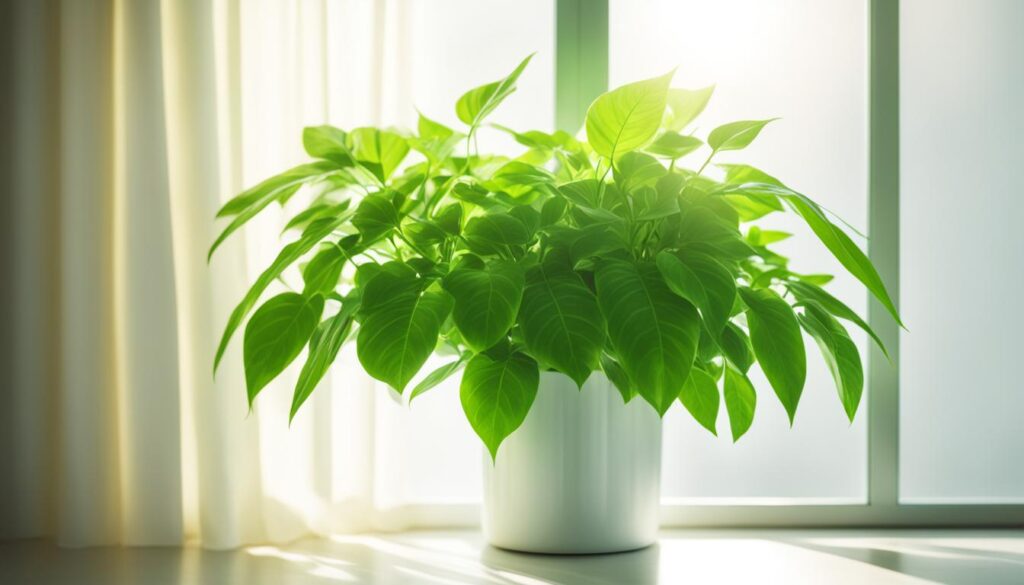
Artificial Lighting Solutions
When natural light is insufficient for indoor plants, artificial lighting solutions can be used to ensure their growth and well-being. There are several types of grow lights available, including incandescent, fluorescent, and LED lights. Each type has its own advantages and considerations.
Incandescent lights: These lights emit a warm, yellowish light and are commonly used for indoor plant care. However, they can generate a lot of heat and may not provide sufficient light for all plants.
Fluorescent lights: Fluorescent lights are energy-efficient and produce a cool, white light that is suitable for a wide range of indoor plants. They are available in various sizes and are commonly used for seedlings, herbs, and low-light plants.
LED lights: LED lights are rapidly gaining popularity in indoor gardening due to their energy efficiency and versatility. They emit a full spectrum of light that can be customized to meet the specific needs of different plants. LED lights also produce very little heat, reducing the risk of plant damage.
When choosing the right artificial lighting solution for your indoor plants, consider factors such as the light intensity and spectrum required by your plants, as well as your budget and energy efficiency preferences. It’s also important to place the lights at the correct distance from your plants to ensure optimal light absorption without causing any light burn.
To use artificial lighting effectively for indoor plant care, follow these tips:
- Position the lights directly above your plants to mimic natural sunlight.
- Ensure that the light covers the entire plant canopy to promote uniform growth.
- Adjust the height of the lights as your plants grow to maintain the appropriate light intensity.
- Use timers to automate the lighting schedule and ensure consistent light exposure.
By utilizing artificial lighting solutions effectively, you can provide your indoor plants with the light they need to thrive, even in spaces with limited natural sunlight.
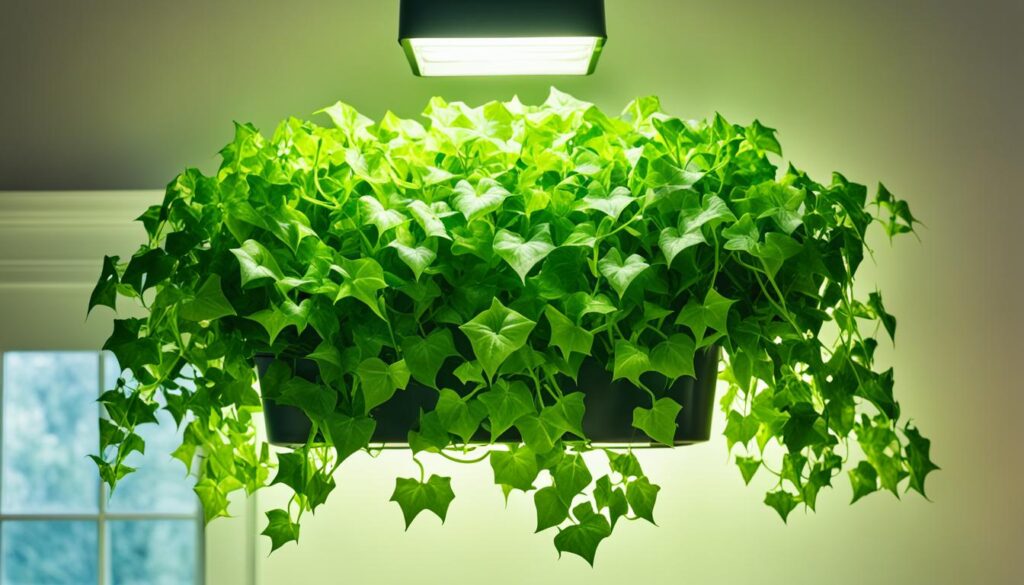
Monitoring and Adjusting Light
To achieve perfect indoor plant lighting, it is crucial to monitor and adjust light levels according to the specific needs of your plants. By assessing and measuring light intensity, you can ensure that your plants are receiving the optimal amount of light for their growth and health.
To assess light intensity, you can use a light meter or rely on visual cues. Aim for a balance between brightness and intensity, avoiding direct sunlight that can cause damage. Keep in mind that different plants have varying light requirements, so it’s essential to understand the needs of your specific plants.
Here are some tips and techniques for monitoring and adjusting light levels for your indoor plants:
- Observe your plants: Pay attention to how your plants respond to light. If they start to stretch towards the light source, it may be an indication of insufficient light.
- Rotate your plants: If you notice uneven growth or leaves turning towards the light source, rotate your plants regularly to ensure even exposure to light.
- Use reflective surfaces: Place reflective materials, such as aluminum foil, near your plants to redirect and maximize light absorption.
- Adjust light duration: Some plants require longer periods of light exposure, while others thrive with shorter durations. Experiment with different light durations and observe how your plants respond.
- Supplement with artificial lighting: If natural light is insufficient, consider using grow lights to provide additional light for your plants.
By carefully monitoring and adjusting light levels, you can create the perfect indoor plant lighting environment to support healthy and thriving plants.
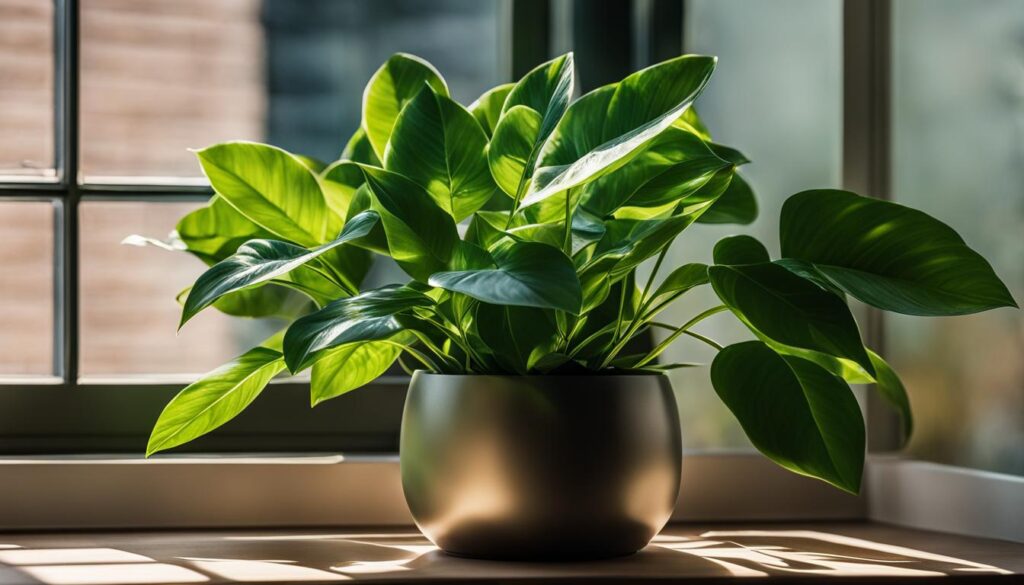
Special Considerations for Specific Plants
Different plants have unique light requirements. When it comes to indoor gardening, understanding these specific needs is crucial for providing perfect indoor plant lighting. In this section, we will discuss the special considerations for different types of plants, including low-light plants, moderate-light plants, and bright-light plants. By tailoring the lighting conditions to suit each plant’s requirements, you can ensure that they thrive in your indoor space.
Low-Light Plants
Low-light plants are excellent choices for indoor environments with limited natural light. These plants have adapted to survive in shade and require less direct sunlight. However, they still benefit from some exposure to light. Place low-light plants near windows where they can receive indirect sunlight for a few hours a day. You can also supplement their light needs with artificial lighting solutions such as fluorescent grow lights, positioned within a suitable distance from the plants.
Moderate-Light Plants
Moderate-light plants require more direct sunlight compared to low-light plants, but they can still thrive in indoor environments. These plants prefer bright, indirect light. Place them near windows with filtered sunlight or provide them with artificial lighting that replicates natural sunlight. LED grow lights are an excellent choice for moderate-light plants as they provide the right spectrum of light for their growth. Make sure to adjust the distance and intensity of the lights to match the needs of your specific plants.
Bright-Light Plants
Bright-light plants are typically tropical or desert plants that thrive in direct sunlight. These plants require the most amount of light and benefit from being placed in bright, well-lit areas of your home. Position them near windows with ample natural sunlight or use high-intensity grow lights to mimic the intensity of sunlight. LED grow lights or metal halide bulbs are suitable options for providing the intense light that bright-light plants need for their optimal growth.
To determine the appropriate light levels and duration for your specific plants, refer to the plant care instructions or consult reputable gardening resources. Remember that any lighting adjustments should be made gradually to allow your plants to acclimate to the changes. With the right lighting conditions, your plants will flourish and add beauty to your indoor space.
Conclusion
Providing perfect indoor plant lighting is crucial for the growth and health of your plants. Throughout this guide, we have discussed the importance of understanding light requirements and how it affects your indoor gardening journey. By ensuring your plants receive the right amount of light, you can create an ideal environment for them to thrive. Understanding light requirements is the key to successful indoor gardening. By considering factors such as light intensity and duration, you can provide the optimal lighting conditions for your plants. Whether you rely on natural light or incorporate artificial lighting solutions, meeting your plant’s light needs will result in healthy and vibrant foliage.
As you venture into indoor gardening, remember to monitor and adjust light levels based on your plant’s requirements. Regularly assess the light intensity and make necessary adjustments to ensure your plants are receiving the perfect amount of light. By paying attention to their needs, you can prevent issues such as leggy growth or stunted development.
Finally, embrace the journey of indoor gardening and enjoy the benefits it brings. Perfect indoor plant lighting not only promotes healthy growth, but it also adds beauty and tranquility to your living space. With the knowledge gained from this guide, you are equipped with the tips and techniques to embark on a successful indoor gardening adventure. For a comprehensive overview of indoor plant care, including lighting and more, check out our Ultimate Guide.
FAQ
Why is proper lighting important for indoor plants?
Proper lighting is crucial for indoor plants because it directly affects their growth and overall health. Without adequate light, plants may become weak, leggy, and fail to flower or produce fruits.
How can I determine the right amount of light for my indoor plants?
Each plant has specific light requirements. You can determine the right amount of light for your indoor plants by understanding the light intensity and duration they need. Factors such as the direction of sunlight and the natural light your space receives can also help you gauge the light levels.
What are some low-light indoor plants that can thrive with limited natural sunlight?
There are several low-light indoor plants that can thrive in spaces with limited natural sunlight. Some popular options include snake plants, pothos, ZZ plants, and peace lilies.
What types of artificial lighting can I use for indoor plants?
There are different types of artificial lighting options for indoor plants, including incandescent, fluorescent, and LED lights. Each type has its own advantages. LED lights are often preferred due to their energy efficiency and customizable light spectrums.
How can I measure and adjust light levels for my indoor plants?
You can measure light levels for your indoor plants using a light meter or by understanding the specific light requirements of your plants. Adjusting light levels can be done by moving plants closer to or further away from light sources or by using timers to control the duration of light exposure.
Do different plants have unique light requirements?
Yes, different plants have unique light requirements. Some plants thrive in low-light conditions, while others require moderate or bright light to flourish. Understanding the light requirements of your specific plants is essential for their health and growth.


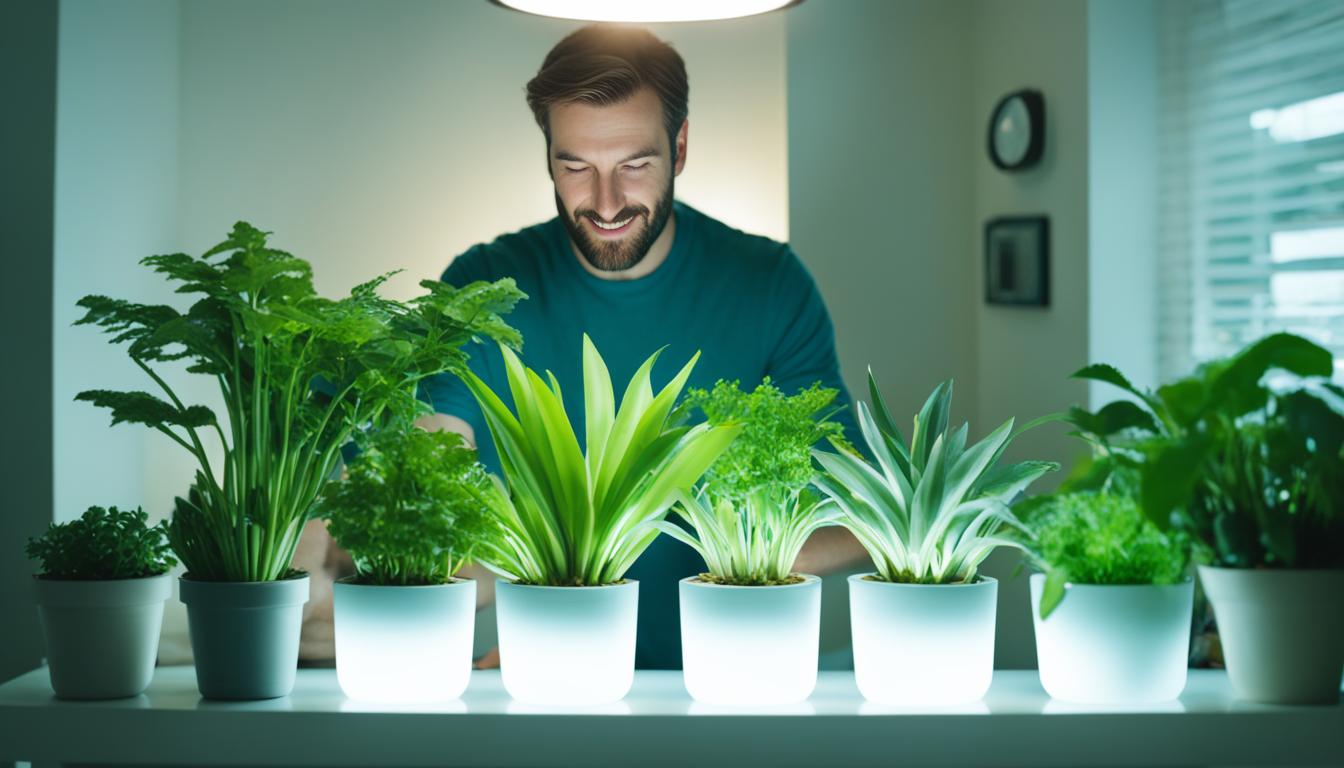
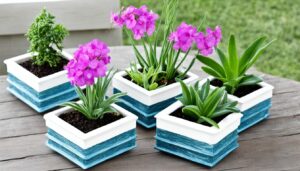
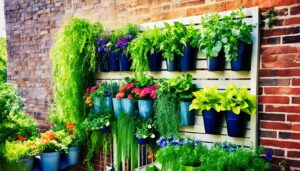
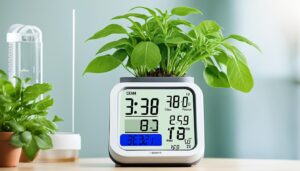
Pingback: The Ultimate Guide to Indoor Plant Care: 20 Essential Tips – Trusted House Plant Guide